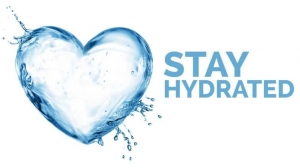
Dehydration occurs when there’s not enough water in your body for normal functions and even mild dehydration can lower your energy levels.
When you’re hydrated, your body can maintain a normal temperature, lubricate and cushion joints, protect sensitive tissues and properly eliminate waste through urination, perspiration and bowel movements.
In general, dehydration can increase your risk of medical conditions such as urinary tract infections, kidney stones, gallstones and constipation.
The body’s regulation of fluid intake and thirst decline with age, so older adults may need to be extra diligent about tracking their water intake throughout the day.
A good way to check your hydration status is to look at the colour of your urine. The general rule is if you are urinating every two to three hours and your urine is clear to pale yellow, that’s a sign that your body is hydrated.
Dark or cloudy urine is typically a sign of dehydration, and not urinating at all is a sign of severe dehydration. That said, certain medications, vitamins or even foods like beets can affect your urine colour.
Early warning signs of dehydration can be: flushed skin, increased body temperature, premature fatigue and decreased exercise capacity.
Later signs of dehydration can include: Dizziness , increased weakness, shortness of breathing whilst exercising.
I know for many. Drinking enough water can be an issue. Here are a few simple ways to make sure you make it part of your daily routine.
Try adding some flavour to your water . Fruit or squash are a great way to make it more palatable.
Make sure you always have a water bottle with you or place sticky notes around your home/ office as reminders.
Make it a habit to sip water before and throughout a meal. This also helps with digestion.
